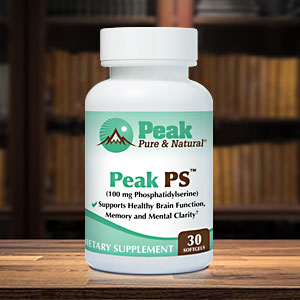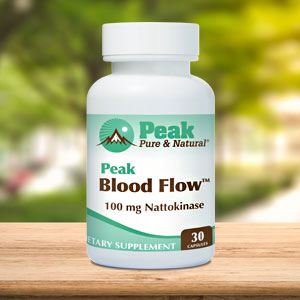Get Easy Health Digest™ in your inbox and don’t miss a thing when you subscribe today. Plus, get the free bonus report, Mother Nature’s Tips, Tricks and Remedies for Cholesterol, Blood Pressure & Blood Sugar as my way of saying welcome to the community!
That low-fat dairy advice has more holes than Swiss cheese

Cheese is one of those foods that’s gotten a bad rap in recent years, partly because dairy is usually verboten on many low-carb eating plans.
Most types of cheese are also high in fat, prompting many heart health experts to recommend staying away from all but low-fat or nonfat versions.
Well, if you’ve been missing cheese or riddled with guilt when you sneak a piece, I’ve got news you’re going to like…
Turns out that low-fat dairy advice has more holes in it than a hefty slice of Swiss cheese.
Full-fat cheese appears to reduce death risk
A study conducted in 80 countries examined the relationships between new diet scoring and health outcomes. This healthy diet score was created based on six foods that have been linked with longevity.
And guess what was one of them? Whole-fat dairy!
The other six “longevity” foods included in the PURE diet referenced in the study included:
- Two to three servings of fruit per day
- Two to three servings of vegetables per day
- Three to four servings of legumes per week
- Seven servings of nuts per week (consider a handful a day)
- Two to three servings of fish per week
- And a whopping 14 servings of whole-fat dairy products per week (but not necessarily butter or whipped cream — think cheese, milk and yogurt).
A diet score ranging from 0 to 6 was assigned to each participant, with each of the six food components being rated 1 for healthy or 0 for unhealthy depending on intake. Participants in the top 50 percent of the population on each of the six food components attained the maximum diet score of 6; the average diet score was 2.95.
The PURE study also tested associations of the diet score with mortality, heart attack, stroke and total cardiovascular disease (CVD). Compared with those with the least healthy diet (a score of 1 or less), people who had the healthiest diet (a score of 5 or more) had:
- a 30 percent lower risk of death;
- an 18 percent lower likelihood of CVD;
- a 14 percent reduced risk of heart attack;
- a 19 lower risk of stroke!
To boot, these associations were confirmed in five independent studies and are in line with earlier PURE study data showing a connection between the consumption of fat and lower risk of death!
Experts say these results call for a re-evaluation of guidelines to avoid whole-fat dairy products…
“Our results show that up to two servings a day of dairy, mainly whole-fat, can be included in a healthy diet,” says study author Dr. Andrew Mente of the Population Health Research Institute, McMaster University, Hamilton, Canada. “This is in keeping with modern nutrition science showing that dairy, particularly whole-fat, may protect against high blood pressure and metabolic syndrome.”
Interestingly, the associations were strongest in areas like South Asia, China and Africa, where calorie intake was low and dominated by refined carbohydrates.
“This suggests that a large proportion of deaths and CVD in adults around the world may be due to undernutrition, that is, low intakes of energy and protective foods, rather than overnutrition,” says Professor Salim Yusuf, senior author and principal investigator of PURE. “This challenges current beliefs.”
Another fascinating side note is that the addition of unprocessed red meat or whole grains had little impact on outcomes. This suggests they can be included or left out of a healthy diet depending on preference.
“Our findings suggest that the priority should be increasing protective foods such as nuts (often avoided as too energy dense), fish and dairy, rather than restricting dairy (especially whole-fat) to very low amounts,” Mente adds.
What exactly is a serving of cheese?
This isn’t the first time we’ve shared the benefits of whole-fat dairy. Just a couple of years ago the Mediterranean diet bought cheese back and other research demonstrated how milk does a heart good.
Before you start working your way through an entire cheese plate, bear in mind that one serving of cheese is 1.5 ounces. That’s roughly the size of a nine-volt battery and a little more than a slice of sandwich cheese. The PURE diet calls for no more than two servings of cheese per day, so be careful not to overdo it—besides you may want to leave room for whole milk and full-fat yogurt (just watch the sugar content in yogurt).
As for which cheeses are healthiest, stick with those that are as minimally processed as possible and avoid ultra-processed types like American cheese as well as those labeled reduced fat.
You may also want to choose cheeses that offer additional health benefits — like full-fat cheddar, which is rich in heart-healthy vitamin K, and goat cheese, which promotes healthy gut bacteria and has lots of vitamin A. And don’t forget this old-school favorite — cottage cheese.
Editor’s note: Did you know that when you take your body from acid to alkaline you can boost your energy, lose weight, soothe digestion, avoid illness and achieve wellness? Click here to discover The Alkaline Secret to Ultimate Vitality and revive your life today!
Sources:
1. Global diet study challenges advice to limit high-fat dairy foods — ScienceDaily
2. Diet, cardiovascular disease, and mortality in 80 countries — European Heart Journal
3. Selecting Cheese for Health — PennState Extension
4. What is the Healthiest Cheese? — Medical News Today















